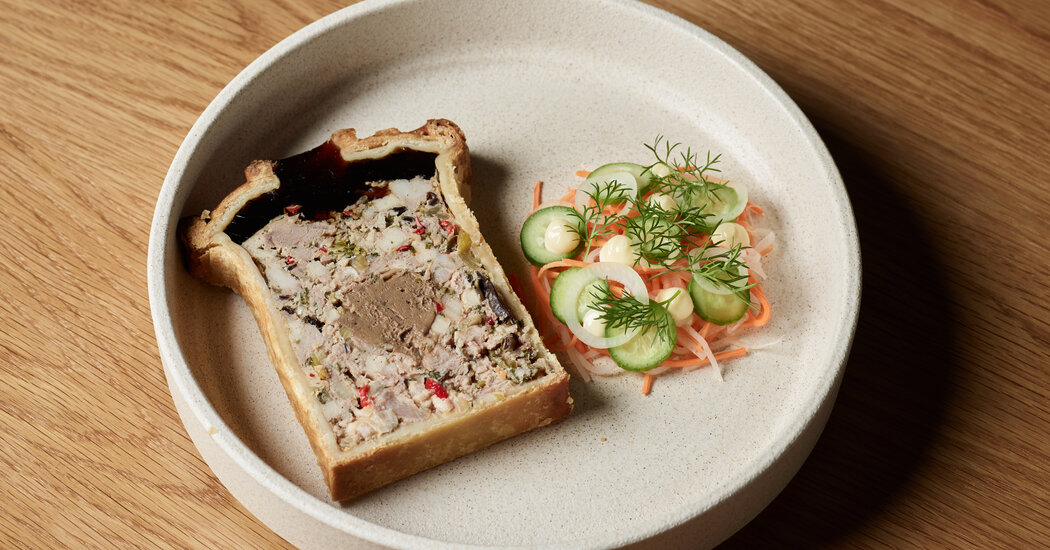Terrines Made for the Upper Crust
Pâté en croûte, the centuries-old French dish composed of meat terrine baked in savory pastry, was first developed out of economy as a way to preserve and use up bits of offal. But today, with skilled kitchen staffs in short supply, the labor-intensive delicacy — which requires multiple days of confiting, jellying, laminating and simmering — feels like a luxury item. “I like the technical aspect of it,” says the chef Nicolas Delaroque, 42, who serves a classic rabbit-and-tarragon version modernized with a little less fat and a bit more spice at his restaurant, Maison Nico, in San Francisco. Markus Glocker, 42, of New York’s Koloman, likewise set out to create a lighter take on the original. “You’re not going to feel like you just ate a stone,” he says of his salmon en croûte, in which slices of tramezzini, a fluffy Italian bread, are wrapped around a rare salmon filet slicked with scallop-and-parsley mousse and topped with gherkins and a beet-infused butter. At Melbourne, Australia’s Aru, the pâté en croûte is reminiscent of a fancy bánh mì. Chả lua, a ground Vietnamese pork loaf, is combined with chicken liver pâté for the filling, and the jelly layer between the meat and the pastry is seasoned with rice vinegar, soy sauce and Maggi, an MSG-spiked seasoning. “It’s quite a humbling experience,” says the charcutier George Jephson, 39, of assembling his iteration, which is stuffed with pork belly, confit pork tongue, crisped chicken skin, pistachios and port jelly, and can be found at his East London wine bar, Cadet, and at nearby restaurants, including Chiltern Firehouse. Still, making use of the whole pig, he says, is worth the effort. “I worked 10 years as a butcher, and we didn’t sell a single piece of pork liver,” he says. “Now I sell 60 kilos a week.” — Lauren Joseph
The Thing: A Geometric, Globe-Trotting Collar from Bulgari
Lately, haute joaillerie designers have been practicing their own version of democracy, combining stones of all sorts — from ancient and rare specimens to faceted minerals only recently extracted from the earth — without regard to hierarchy. Thus, a single bedazzled collar like this geometric one in shades of rose from the Italian jewelry house Bulgari can be seen both as an object of beauty and a primer on how gems emerge from and reflect history. Bits of reddish-orange coral, used for eons as decorative amulets in classical and Indigenous…
Click Here to Read the Full Original Article at NYT > Travel…
